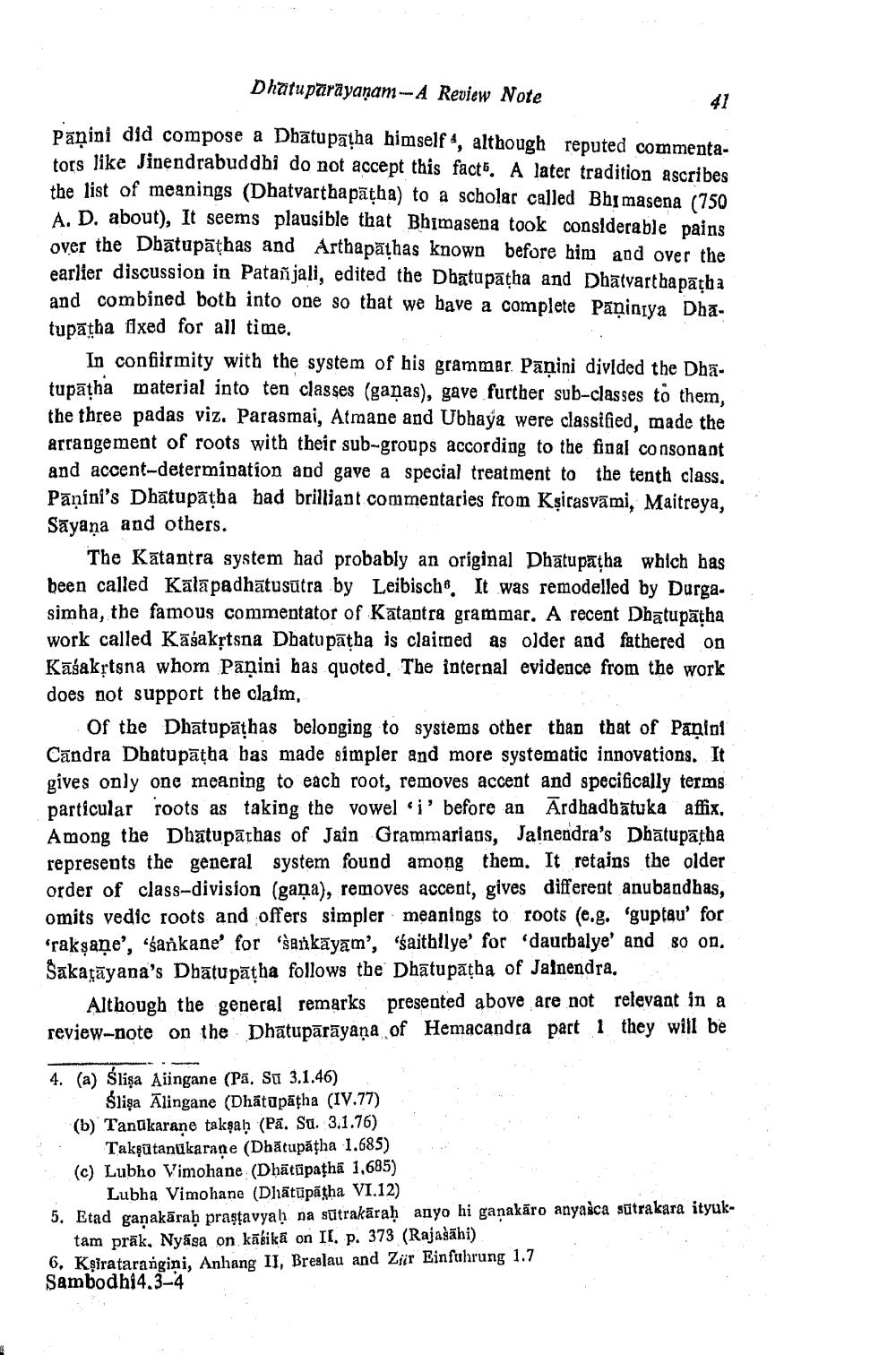________________
Dhatuparayanam-A Review Note
Panini did compose a Dhatupatha himself, although reputed commentators like Jinendrabuddhi do not accept this facts. A later tradition ascribes the list of meanings (Dhatvarthapatha) to a scholar called Bhimasena (750 A. D. about), It seems plausible that Bhimasena took considerable pains over the Dhatupaṭhas and Arthapathas known before him and over the earlier discussion in Patanjali, edited the Dhatupatha and Dhatvarthapatha and combined both into one so that we have a complete Paniniya Dhatupatha fixed for all time.
41
In confiirmity with the system of his grammar Panini divided the Dhatupatha material into ten classes (ganas), gave further sub-classes to them, the three padas viz. Parasmai, Atmane and Ubhaya were classified, made the arrangement of roots with their sub-groups according to the final consonant and accent-determination and gave a special treatment to the tenth class. Panini's Dhatupatha had brilliant commentaries from Kṣirasvami, Maitreya, Sayana and others.
The Katantra system had probably an original Dhatupatha which has been called Kalapadhatusutra by Leibisch. It was remodelled by Durgasimha, the famous commentator of Katantra grammar. A recent Dhatupaṭha work called Kāśakṛtsna Dhatupatha is claimed as older and fathered on Kasakṛtsna whom Panini has quoted. The internal evidence from the work does not support the claim,
Of the Dhatupathas belonging to systems other than that of Panini Candra Dhatupatha bas made simpler and more systematic innovations. It gives only one meaning to each root, removes accent and specifically terms particular roots as taking the vowel i' before an Ardhadhatuka affix. Among the Dhatupathas of Jain Grammarians, Jainendra's Dhatupatha represents the general system found among them. It retains the older order of class-division (gana), removes accent, gives different anubandhas, omits vedic roots and offers simpler meanings to roots (e.g. 'guptau' for 'rakṣaṇe', 'sankane' for 'sankayam', 'saithllye' for 'daurbalye' and so on. Sakatayana's Dhatupaṭha follows the Dhatupaṭha of Jainendra.
Although the general remarks presented above are not relevant in a review-note on the Dhatuparāyaṇa of Hemacandra part 1 they will be
4. (a) Ślisa Aiingane (Pa. Su 3.1.46)
Ślişa Alingane (Dhatupaṭha (IV.77) (b) Tanukarane takṣaḥ (Pa. Su. 3.1.76) Takşütanukarane (Dhatupatha 1.685)
(c) Lubho Vimohane (Dhätüpatha 1,685) Lubha Vimohane (Dhatupatha VI.12)
5. Etad gaṇakāraḥ praṣṭavyaḥ na sūtrakāraḥ anyo hi ganakaro anyasca sutrakara ityuk
tam prāk. Nyasa on käsikä on II. p. 373 (Rajasahi)
6. Ksiratarangini, Anhang II, Breslau and Zür Einführung 1.7 Sambodhi4.3-4




